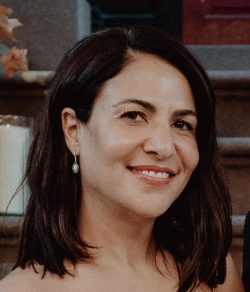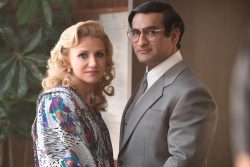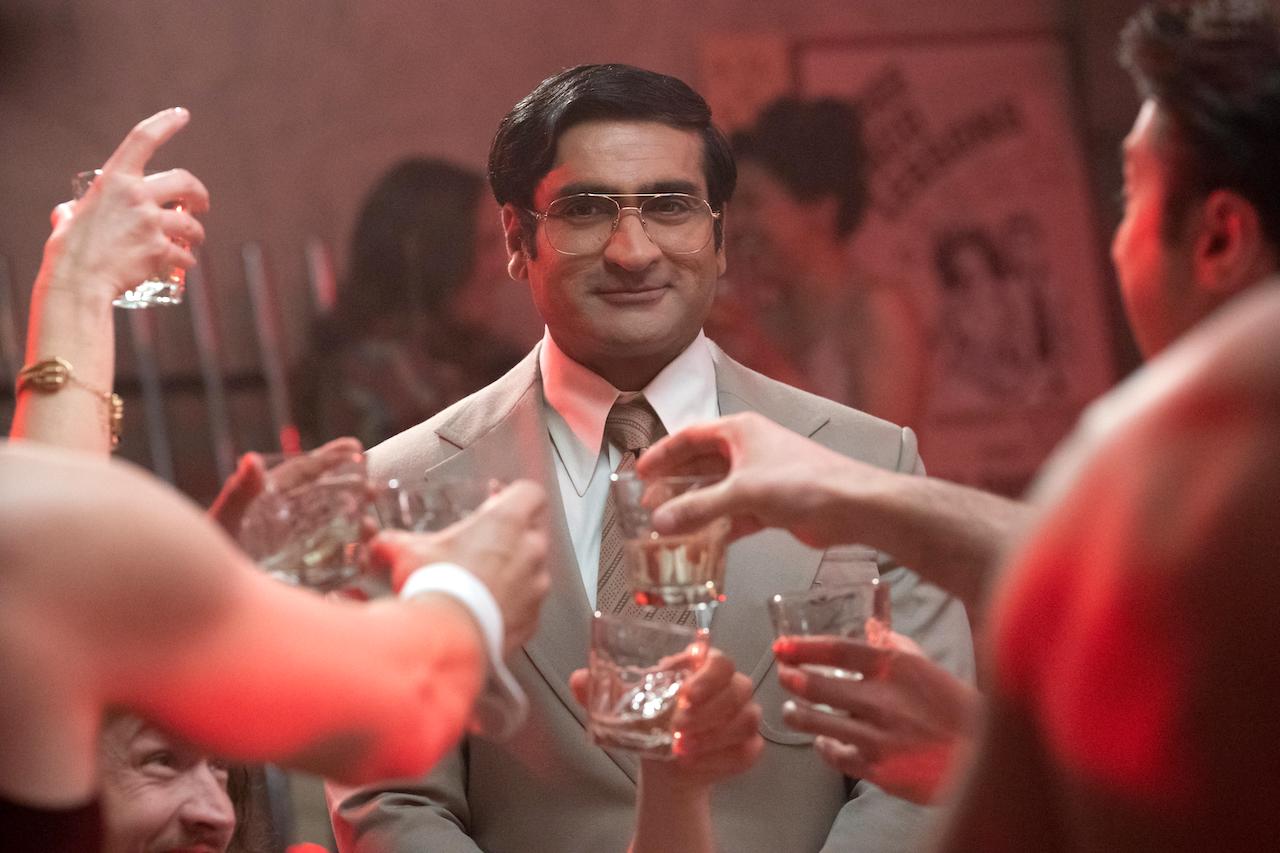The idea of a strip club for women was scandalous enough in the 1970s. But buff male dancers in G-strings and bowties was perhaps the least shocking part of the world that Somen “Steve” Banerjee created.
Now an eight-part mini-series airing on Hulu, Welcome to Chippendales tells the riveting story of Banerjee (played by Kumail Nanjiani), an Indian immigrant desperate to defy the expectations of all around him and become a wealthy entrepreneur in Los Angeles. His drive to succeed at all costs makes for a tale too hard to believe to be untrue.
Also starring Murray Bartlett, Juliette Lewis and Annaleigh Ashford, Welcome to Chippendales is a true crime saga created by Robert Siegel (Pam & Tommy, The Founder) who is co-showrunner with Jenni Konner.
Best known for her work as co-showrunner on Girls with Lena Dunham, Konner has a longstanding career in the industry as a writer, producer, director, and even script doctor. We spoke to her about this latest project and the unique career opportunity it presented.

Jenni Konner. Photo by Chellise Michael Photography
Tell me about how you became involved with this project.
I’ve been doing this for a very long time now and I had made an overall deal with Disney. They came to me and asked if I would go run this show with Rob Siegel. He is the genius creator of the show and he also does a huge portion of the writing. When they asked, I really wasn’t planning on working on someone else’s show at the time.
And then I read the script. I thought “Oh my God, this is so great,” and it just was. We had a lot of fun on the show and really connected with the cast. Everyone loved each other and it was just one of those perfect work experiences.
Kumail in particular took his job so seriously and it was moving to watch. It’s incredible and so different from what he’s done before. He treated it like the most important thing and you can really feel it. He had to work hard to focus and find a way into the character of Steve Banerjee. He’s a tricky character. Rob and I like to say that at the beginning, he would ask us questions about the character. By the end, we were the ones asking him questions about the character.
A lot of people have no idea there is this dark story behind the Chippendales and the vast majority don’t seem to associate it with true crime. How did you come to learn the backstory and what, if any, research did you have to do?
I didn’t know either!
I came across it because Rob had been working on a screenplay of the story for something like 10 years…so it was already in process. I got very lucky because that part of it was so easy.
In terms of the research, there is a lot of material on it. We optioned a book called Deadly Dance: The Chippendales Murders (by K. Scot Macdonald and Patrick MontesDeOca). There is a lot of information about some things that happened and not a lot of information about other things. For instance, Annaleigh Ashford plays Steve Banerjee’s wife, Irene. There’s almost nothing about her at all, on the internet or in any books. We know she worked at the business and we know how she died. There’s literally one picture of her, and it’s from their wedding. So her story was complete invention.
But the overall story? I think if you tried to sell it to someone, they would think it wasn’t real. They would say, “That could never happen”. It’s a true crime story and it’s also not a true crime story. It has so many twists and turns, and I think the fact that it has all of that set in this particular backdrop is what makes it so enjoyable.
It’s a very stylish show. Tell me about recreating 1970s Hollywood and balancing the visual with the written.
We started with an amazing director named Matt Shakman who did our first two episodes. He had a very clear vision. He knew how he wanted to shoot it and what it would look like. We also had who were probably the best department heads I’ve ever worked with. They were not only top, and I mean top, of their game, but they also worked well together, which doesn’t always happen. Everything was in harmony with everything else.

Annaleigh Ashford (Irene Banarjee) and Steve Banarjee (Kumail Nanjiani) Photo by Erin Simkin/ Hulu)
We’re constantly talking to production design and hair and makeup. We’re talking to costumes so that they would know what hair to do with what costumes. Theoretically that’s supposed to happen on most sets, but it doesn’t always work out that way.
You have done a lot of writing for female leads specifically over the course of your career, and even taught others how to write female characters. What was your approach to the female characters in this story given the era and subject matter?
What was really different from my past work to this work, and what I found more challenging, was that this is a drama. I’ve never written anything about a crime that wasn’t like someone from Girls peeing on a sidewalk or something.
A crime drama was just so different for me and I learned so much from Rob. And from being on the stage watching it. The first time I started writing a script, I thought “this is just a lot of pages!”
But I like to think we took care of all the characters, not just the female ones. I loved working on the love story with Nick (Murray Bartlett) and Bradford (Andrew Rannells) and then adding in the love triangle with Denise (Juliette Lewis). That wasn’t a true story, it was complete invention, but it was a really interesting piece. It was a nice time for us to be able to tell a love story.
What did you learn from working with Rob Siegel and how do you write together?
Rob did just a huge part of the writing and really every script went through him in the end. It’s really his voice.
I think that the way we worked together is we took turns with things… I would leave him alone writing and work in the writers’ room or leave him alone writing and go do editing or something else. I just wanted to make it a safe space for him to do his job. But we also just really get along well and I can’t wait to work with him again.
Is there anything you took from previous projects and collaborations, or even your work as a script doctor, that you brought with you to this project?
I think it’s a really fine line with collaboration. There are a lot of people who have a tough time or a bad experience when another showrunner is brought on. And I think there are not that many of us who can really do that without forcing their own vision on someone else. So I think what I’ve learned is that it’s about protecting the vision of the creator. Obviously pushing him or her out of their comfort zone and all of that… but definitely also knowing whose voice you’re honoring.

